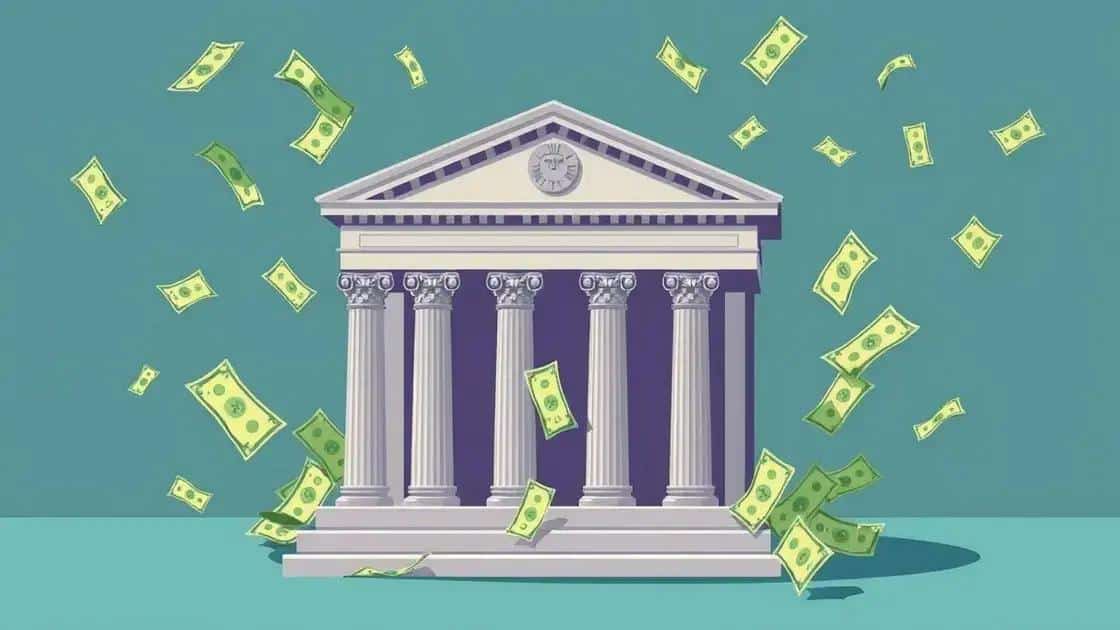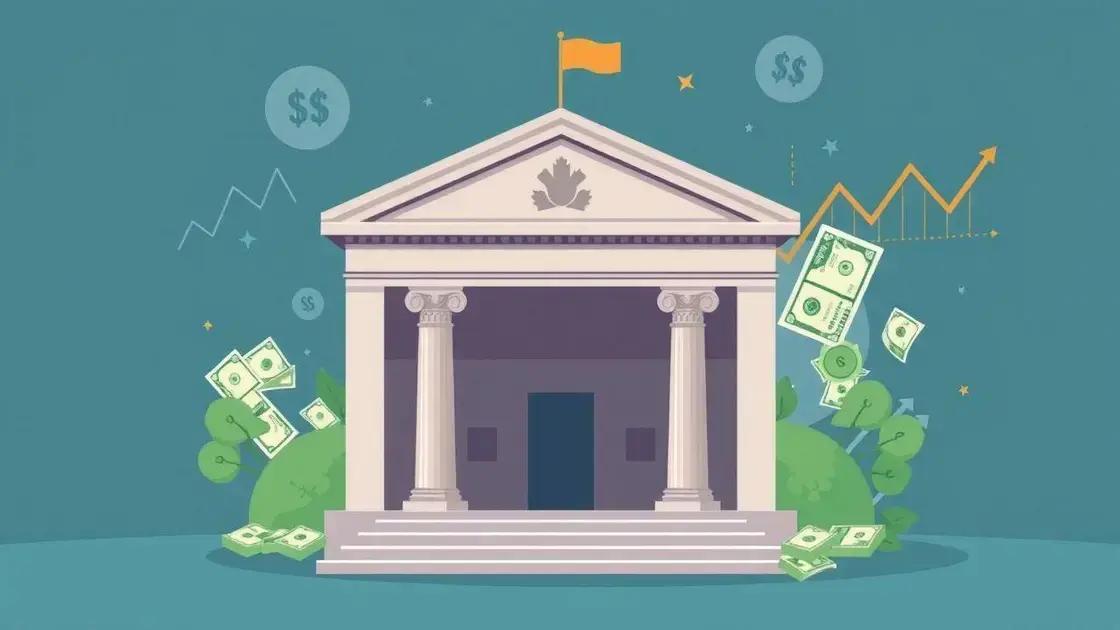How the US magically creates money: Understanding the process

Money creation refers to the process by which central banks and financial institutions increase the money supply in an economy, impacting inflation, economic growth, and public perception of monetary policy.
How the US magically creates money is more than just a financial mystery—it’s a fundamental aspect of modern economies. Ever wondered how this process shapes your daily life? Let’s dive in!
The basics of how money is created
Understanding the basics of how money is created is crucial for grasping economic principles. At its core, money creation involves a series of processes facilitated by financial institutions. Let’s explore this in more detail.
The Role of Banks
Commercial banks play a key role in creating money. When a bank receives deposits, it does not keep all of that money in reserve. Instead, it can lend a portion of it. This leads to an increase in the money supply.
How It Works
Here’s a simple breakdown of how money is created:
- Deposits: When you deposit money in a bank, that money becomes part of the bank’s reserves.
- Lending: The bank lends out a percentage of those deposits to those in need.
- Money Multiplier Effect: This process continues, creating new deposits as loans are spent and re-deposited, magnifying the total money supply.
Next, we have the central banks, like the Federal Reserve, which also play a significant role in shaping the money supply. They can influence how much money is available in the economy by setting interest rates and engaging in monetary policy operations. For instance, decreasing interest rates encourages borrowing, leading to more money creation through loans.
Additionally, central banks can perform actions known as quantitative easing, where they purchase assets to inject liquidity directly into the economy. This method increases the amount of money circulating, aiming to stimulate economic activity.
The role of central banks in the money supply

The role of central banks in the money supply is essential for maintaining economic stability. They manage how much money is circulating in the economy and influence interest rates. These actions help control inflation and stimulate growth.
Monetary Policy Tools
Central banks use several tools to control the money supply. Here are some key methods:
- Open Market Operations: Buying or selling government securities to influence liquidity in the banking system.
- Interest Rate Adjustments: Changing the federal funds rate affects borrowing costs and can either encourage or limit spending.
- Reserve Requirements: Determining how much money banks must hold in reserve affects how much they can lend.
By employing these strategies, central banks aim to achieve goals like full employment, price stability, and moderate long-term interest rates. When inflation rises, they may increase interest rates to slow down borrowing. Conversely, during a recession, lowering rates can encourage spending and investment.
Central banks also respond to economic crises. For instance, during the 2008 financial crisis, many central banks introduced measures like quantitative easing. This strategy involved injecting money directly into the economy by purchasing financial assets. By doing so, they aimed to boost liquidity and promote lending when traditional methods were insufficient.
Effects of money creation on the economy
The effects of money creation on the economy are significant and multifaceted. When new money enters circulation, it can stimulate economic activity. However, it is essential to understand both the positive and negative consequences.
Positive Effects
Creating more money can lead to several beneficial outcomes:
- Increased Spending: More money in circulation means people and businesses have more to spend, which can boost demand for goods and services.
- Lower Interest Rates: More available money can lead to lower borrowing costs, encouraging businesses to invest in expansion.
- Economic Growth: As spending increases, the overall economy can grow, leading to job creation and higher incomes.
On the other hand, there are also important risks associated with money creation that can lead to adverse effects on the economy. When too much money is created too quickly, inflation can rise significantly.
Negative Effects
Here are some negative consequences that can arise from excessive money creation:
- Inflation: When more money chases the same amount of goods, prices rise, reducing purchasing power.
- Asset Bubbles: Increased liquidity can lead to over-investment in certain sectors, causing bubbles that may eventually burst.
- Income Inequality: Often, the benefits of money creation are not evenly distributed, leading to wider gaps between income levels.
Understanding the balance between money creation and its effects is crucial for policymakers. Proper management can help mitigate the negative consequences while harnessing the positive effects to foster a healthy economy. Thus, it’s vital to approach money creation with both caution and strategic intent.
Public perception and misconceptions about money creation

Public perception and misconceptions about money creation can significantly affect how policies are viewed and accepted. Many people have mixed feelings about how money is created and its implications for the economy.
Common Misconceptions
One common belief is that money creation leads to immediate inflation. While it’s true that excessive money supply can cause inflation, it is not always the case. Central banks carefully manage this process to prevent rapid inflation. Here are some notable misconceptions:
- More money means higher prices: This is a simplification. Inflation is influenced by various factors, not just the money supply.
- Money can only be printed: Many believe only physical money can be created, but most money is digital and created through banking systems.
- Only the government controls money creation: While the government plays a role, central banks are the primary entities responsible for managing money supply.
The perception of money creation also varies across different demographics. For instance, younger generations may not fully understand the complexities of how money is created, leading to skepticism towards economic policies. Misinformation can spread easily, especially on social media, causing anxiety about economic stability.
Impact on Economic Policy
These misconceptions can impact public support for monetary policies. When the public fears that money creation will lead to inflation or economic problems, they may resist necessary economic measures. Educating the public about the realities of money creation is crucial for fostering understanding and support.
Having open conversations and providing clear, accessible information about how money creation works can help demystify the topic. This way, people can make informed opinions, reducing fear and skepticism surrounding monetary policies.
FAQ – Common Questions about Money Creation
What is money creation?
Money creation is the process by which a central bank or financial institutions increase the money supply in an economy.
How does money creation affect inflation?
Excessive money creation can lead to inflation, as more money in circulation can drive up prices if it outpaces the supply of goods.
Who controls money creation?
Central banks, such as the Federal Reserve, primarily control money creation through monetary policy tools.
Why is public understanding of money creation important?
A better public understanding helps dispel myths and encourages informed discussions about economic policies and their impacts.





